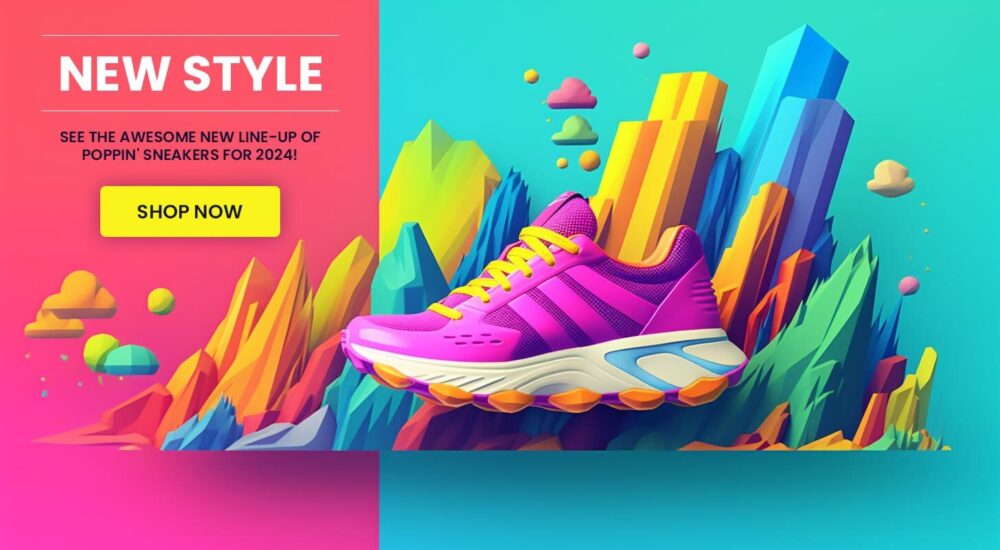Let's have a chat about taking your digital marketing to the next level
So let’s say that you have some landing pages for your business. You may even be paying to send traffic to these pages (like Google Ads). How do you determine whether your landing page(s) are performing as expected? Do you tell by looking at a factor of things, or an overall assessment of the performance of the page? Before you go out and buy a book, here’s my digital doctor diagnosis to determine if your landing page is broken, banged up, or busted beyond repair. Perform you own analysis of each component of your landing page to find out what’s doing well and what needs an overhaul.
Ready? Let’s go.

15 Signs Your Landing Pages Aren’t Working & What to Do
1. Low Conversion Rate:
-
- Signs: A low conversion rate means that the percentage of visitors taking your desired action (e.g., making a purchase, signing up for a newsletter, clicking on a second page of content) is minimal.
- Action: Review your landing page’s design, content, and call-to-action (CTA) to ensure they are compelling and aligned with your audience’s needs and expectations. A/B testing can help you identify what resonates best with your visitors.
2. High Bounce Rate:
-
- Signs: A high bounce rate indicates that visitors leave your landing page quickly without engaging with your content. (Note: the lower the number of your bounce rate, the better your page is performing.)
- Action: Check your landing page’s load time, readability, and overall design. Don’t forget to view your page on both a desktop and mobile device. Make sure your messaging is clear and relevant to the traffic source that brings users to your page.
3. Irrelevant Traffic:
-
- Signs: Are you sending people to the landing page who aren’t interested in your product or offer? Low conversions, high bounce rate, poor copy, poor imagery, or a poor presentation of benefits could be the cause.
- Action: Refine your ad targeting, keywords, and audience segmentation to ensure you’re attracting visitors who are more likely to convert. Have a copywriter look over your page copy to see if it reads well to your target audience.

4. Slow Loading Time:
-
- Signs: A slow-loading landing page can lead to impatience and high bounce rates.
- Action: Optimize your landing page for speed by compressing images, reducing unnecessary scripts, and using a reliable hosting provider. You can check your page’s load speed here.
5. Lack of Mobile Optimization:
-
-
- Signs: If your landing page doesn’t display correctly on mobile devices, you risk losing a significant portion of your audience. Is the important information far down on the page? Does your call to action disappear?
- Action: Ensure your landing page is responsive and mobile-friendly, adapting to various screen sizes and orientations. Confirm that people can make their conversion throughout the page.
-
6. Unclear Value Proposition:
-
- Signs: If visitors can’t quickly understand the value of your product or offer, they may leave.
- Action: Craft a concise and compelling headline that clearly communicates the benefit or solution your offer provides. Use persuasive copy and visuals to support your message. Show it to people that you trust and that will provide truthful criticism. Ask them if the proposition and copy makes sense to them4

7. Weak Call to Action (CTA):
-
- Signs: If your CTA is generic or unnoticeable, users might not take the desired action.
- Action: Make your CTA prominent, use action-oriented language, and explain what users will gain by clicking or engaging with it. Look at the color of the CTA; does to stand out on the page, or does it blend in with other similar colors?
8. Insufficient Trust Signals:
-
- Signs: Lack of trust elements, such as testimonials or security badges, can lead to skepticism. Got good reviews on Google or Yelp? Can people see them on your page?
- Action: Incorporate trust-building elements that reassure visitors about the reliability and credibility of your product or service. Awards, nominations, reviews, membership in associations, heck, if you sponsor a little league team get their logo on that landing page!
9. Poor Design and Visuals:
-
- Signs: An unattractive or cluttered design can discourage engagement. Having some open space is good.
- Action: Ensure your landing page has a clean, modern design with visually appealing images and a layout that guides users’ eyes toward your CTA. Negative space isn’t a bad thing and can add importance to the elements that are on the page.

10. No A/B Testing:
-
- Signs: Without A/B testing, you miss opportunities to optimize your landing page for better results. Try different edits to copy, imagery and color but give your changes enough time to see if there is a difference.
- Action: Implement A/B testing to experiment with different elements like headlines, images, colors, and CTAs. Continuously analyze the data and make iterative improvements. If you don’t think that your landing page gets enough traffic, buy some ads and send targeted traffic to it. The investment is worth it.
11. High Exit Rate:
-
- Signs: If a specific point on your landing page has a notably high exit rate, investigate what might be causing users to leave.
- Action: Identify problem areas and make adjustments to those areas. For example, if a form is causing exits, consider simplifying it or providing clearer instructions. Give enough time for the data to show if your change worked or not.
12. Inadequate Analytics:
-
- Signs: Without proper tracking and analytics, you won’t have a clear picture of your landing page’s performance.
- Action: Implement robust analytics tools like the free Google Analytics to monitor user behavior, track conversions, and gain insights into user journeys. Make sure that your Google Analytics is working if you haven’t looked at it since before July 2023; Google moved to a new version of Analytics and yours may not be capturing data anymore.

13. Ineffective Traffic Sources:
-
- Signs: Traffic sources that don’t align with your target audience or offer can lead to low-quality visitors.
- Action: Refine your marketing strategy to focus on channels that attract relevant traffic. Facebook may not be your target audience’s social media of choice. Create user personas to test out your theories. Evaluate keywords and ad placements to ensure you are marketing to the right audience.
14. Outdated Content:
-
- Signs: If your landing page content is outdated or no longer relevant, it can deter visitors.
- Action: Regularly update your landing page to reflect current offerings, promotions, and industry trends. Check your language so that it reflects present trends or culture. Are your ads talking about your New Year’s promotions and it’s July? Uh oh (I’ve seen it!)
15. Competitive Benchmarking:
-
- Signs: If you suspect that your competitors are achieving better results with similar offers, it suggests room for improvement. They’re doing something better.
- Action: Study your competitors’ landing pages to identify what they are doing differently. Give them props if you see how they are doing it better, but then think about how you can also improve on your page. Borrow effective strategies while tailoring them to your unique value proposition.
There you go.
Landing pages are a very important part of a full digital marketing strategy. It can feel overwhelming to learn all of these facets to pages, and I wouldn’t recommend that you need to be an expert on this subject. Knowing enough can make a huge difference in getting more results.
Good luck and may your conversion rate always be improving!

